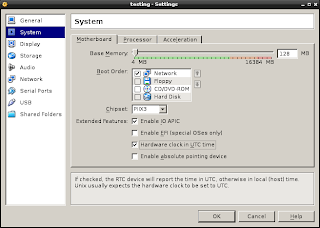Some services that accept email addresses want to ensure that these email addresses are valid.
There are multiple aspects to an email being valid:- The address is syntactically valid.
- An SMTP server accepts mail for the address.
- A human being reads mail at the address.
- The address belongs to the person submitting it.
How does one verify an email address? I'll start with the wrong solutions and build up the correct one.
Possibility #0 - The Regular Expression
Discussions on a correct regular expression to parse email addresses are endless. They are almost always wrong. Even really basic pattern matching such as *@*.* is wrong: it will reject the valid email address n@ai.[5]
Even a fully correct regular expression does not tell you if the mailbox is valid or reachable.
This scores 0/4 on the validity checking scale.
Possibility #1 - The VRFY Command
The oldest mechanism for verifying an email address is the VRFY mechanism in RFC821 section 4.1.1:
VERIFY (VRFY) This command asks the receiver to confirm that the argument identifies a user. If it is a user name, the full name of the user (if known) and the fully specified mailbox are returned.
However this isn't sufficient. Most SMTP servers disable this feature for security and anti-spam reasons. This feature could be used to enumerate every username on the server to perform more targeted password guessing attacks:
Both SMTP VRFY and EXPN provide means for a potential spammer to test whether the addresses on his list are valid (VRFY)... Therefore, the MTA SHOULD control who is is allowed to issue these commands. This may be "on/off" or it may use access lists similar to those mentioned previously.
This feature wasn't guaranteed to be useful at the time the RFC was written:[1]
The VRFY and EXPN commands are not included in the minimum implementation (Section 4.5.1), and are not required to work across relays when they are implemented.
Finally, even if VRFY was fully implemented there is no guarantee that a human being reads the mail sent to that particular mailbox.
All of this makes VRFY useless as a validity checking mechanism so it scores 1/4 on the validity checking scale.
Possibility #2 - Sending a Probe Message
With this method you try to connect with a mail server and pretends to send a real mail message but cut off before sending the message content. This is wrong for a for the following reasons:
A system administrator that disabled VRFY has a policy of not allowing for the testing for email addresses. Therefore the ability to test the email address by sending a probe should be considered a bug and must not be used.
The system might be set up to detect signs up of a probe such as cutting off early may rate limit or block the sender.
In addition, the SMTP may be temporarily down or the mailbox temporarily unavailable but this method provides no resilience against failure. This is especially true if this mechanism is attempting to provide real-time feedback to the user after submitting a form.
This scores 1/4 on the validity checking scale.
Possibility #3 - Sending a Confirmation Mail
If one cares about if a human is reading the mailbox the simplest way to do so is send a confirmation mail. In the email include a link to a website (or set a special reply address) with some indication of what is being confirmed. For example, to confirm "user@example.com" is valid the link might be http://example.com/verify?email=user@example.com or http://example.com/verify?account=12345[2].
This method is resilient against temporary failures and forwarders. Temporary failures could be retried like a normal SMTP conversation.
This way it is unlikely that a non-human will trigger the verification email[3]. This approach solves some of the concerns, it suffers from a fatal flaw:
It isn't secure. It is usually trivial to guess the ID number, email account, other identifier. An attacker could sign up with someone else's email account and then go to the verification page for that user's account. It might be tempting to use a random ID but randomness implementations are usually not secure.
This scores 3/4 on the validity checking scale
Possibility #4 - Sending a Confirmation Mail + HMAC
The correct solution is to send a confirmation, but include a MAC of the identifier in the verification mechanism (reply, or url) as well. A MAC is a construction used to authenticate a message by combining a secret key and the message contents. One family of constructions, HMAC, is a particularly good choice. This way the url might become http://example.com/verify?email=user@example.com&mac=74e6f7298a9c2d168935f58c001bad88[4]
Remember that the HMAC is a specific construction, not a naive hash. It would be wise to use a framework native function such as PHP's hash_hmac. Failing to include a secret into the construction would make the MAC trivially defeated by brute force.
This scores 4/4 on the validity checking scale
Closing Notes
Getting email validation right is doable, but not as trivial as many of the existing solutions make it seem.
Thank you to bd for proofreading and reviewing this blog post.
%dig +short ai MX
10 mail.offshore.ai.








